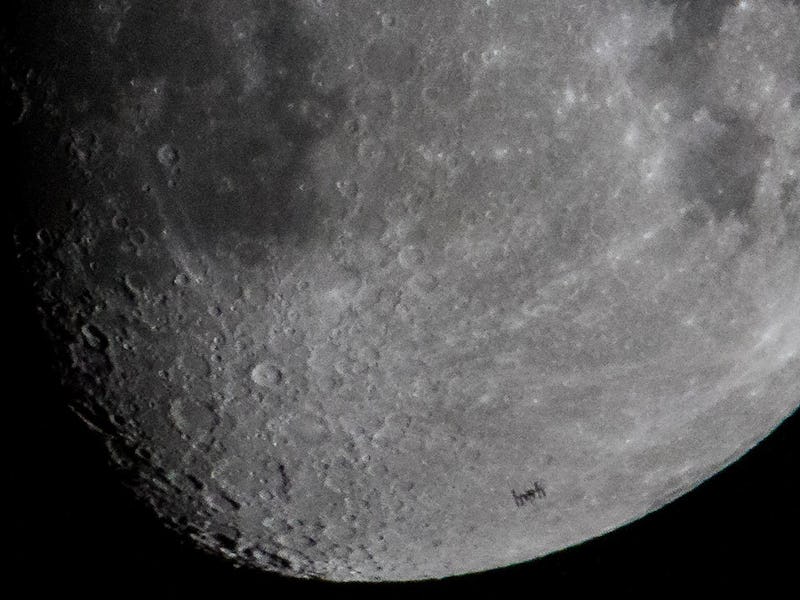50-year-old lunar rocks have upended a common belief about the Moon
Scientists are one step closer to finding out how our closest neighbor formed.

More than 50 years ago, NASA landed humans on the Moon — and we brought a piece of it back with us to Earth.
This was no ordinary souvenir. The 22 kilograms of rock and dust the Apollo astronauts collected on the Moon has transformed our understanding of our closest cosmic neighbor. And the revelations are still coming, more than half a century later.
One of the biggest mysteries scientists are still to solve is how the Moon formed — and the Apollo rock samples have proven pivotal in the investigation.
An old analysis of the lunar samples had suggested that the composition in oxygen isotopes of the Moon and Earth were practically indistinguishable. But if that were the case, then it contradicted one of the leading theories of the Moon's origins: The giant impact hypothesis. The theory goes that the Moon formed from the chaos of the early Solar System in a collision between the proto-Earth and another, Mars-sized planetary body — meaning it would have a different material composition to the Earth.
But it looked like the Apollo rocks said otherwise — until now.
In a new study published Monday in the journal Nature Geoscience, scientists correct that misconception, putting us on the right track toward finally figuring out the true origin story of the Moon.
Old rocks, new perspective
Erick Cano, a researcher at the University of New Mexico and lead author of the study, decided to revisit the Apollo samples with a different approach.
“The method was essentially the same, the difference comes into how we looked at the variation between individual samples,” Cano tells Inverse.
In the original 2001 study, a team of researchers had studied lunar samples collected during Apollo missions 11, 12, 15, 16, and 17, and calculated the average value of their isotopic composition.
Apollo 17 astronaut Gene Cernan preparing to collect samples 73001 and 73002.
Each of the samples were collected at a different location on the Moon, which means they had quite distinct characteristics.
“There’s a big difference in how much variation there is in individual lunar samples,” Cano says.
So instead of looking at the average isotopic composition across all the samples, Cano and his team looked at the individual values of the different rocks, finding wide variations between each one.
The new approach reveals evidence that the Earth and the Moon appear to have distinctly different oxygen isotope compositions.
Specifically, samples collected from the deep lunar mantle, which extends around 30 miles beneath the surface of the Moon, appear to be most supportive of the giant impact hypothesis, the researcher say.
Moon-formation theory proven?
According to the giant impact hypothesis, the Moon formed around 4.5 billion years ago from the ejected material of a major, early universe collision between a Mars-sized planetary body and a young Earth, right after our planet formed its initial crust.
If the theory is true, then the Moon would be made up of material that is different from that of the Earth, since it was impacted by a foreign body.
Color photograph of Apollo 11 Sample.
The early findings on the oxygen isotopes presented a “compositional conundrum,” Cano says.
Previous models tried to reconcile the findings with the prevailing theory, suggesting that the unexpectedly similar oxygen isotope concentration was the signature of mixing events caused by other, later impacts.
The new results prove that there is a clear difference between the material that makes up the Earth and the Moon after all — but they don't quite validate the giant impact hypothesis yet, Cano says.
Rather, the data "opens the door for entirely new range of scenarios,” he says. Only further analysis can reveal exactly how the Moon formed, and we may soon have the samples we need to do it.
Return to the Moon
NASA plans a human return to the Moon by the year 2024 with the upcoming Artemis mission. If NASA succeeds, then scientists here on Earth hope for a new batch of samples that can help them further examine how the Moon came to be.
NASA plans on sending the first woman and the next man to the Moon by 2024.
Previously, all of the Apollo samples were collected relatively close to the surface, meaning they are mostly composed of material ejected from volcanic eruptions, Cano says.
“If we go back, it would be nice to actually get down into the mantle,” he says.
For now, scientists will have to make do with the lunar rocks already at hand.
“It’s just a step further in getting a better idea of how the giant impact occurred...another step in continuing to develop our idea of how the Moon formed,” Cano says.
Abstract: The virtually identical oxygen isotope compositions of the Earth and Moon revealed by Apollo return samples have been a challenging constraint for lunar formation models. For a giant impact scenario to explain this observation, either the precursors to the Earth and Moon had identical oxygen isotope values or extensive homogenization of the two bodies occurred following the impact event. Here we present high-precision oxygen isotope analyses of a range of lunar lithologies and show that the Earth and Moon in fact have distinctly different oxygen isotope compositions. Oxygen isotope values of lunar samples correlate with lithology, and we propose that the differences can be explained by mixing between isotopically light vapour, generated by the impact, and the outermost portion of the early lunar magma ocean. Our data suggest that samples derived from the deep lunar mantle, which are isotopically heavy compared to Earth, have isotopic compositions that are most representative of the proto-lunar impactor ‘Theia’. Our findings imply that the distinct oxygen isotope compositions of Theia and Earth were not completely homogenized by the Moon-forming impact, thus providing quantitative evidence that Theia could have formed farther from the Sun than did Earth.